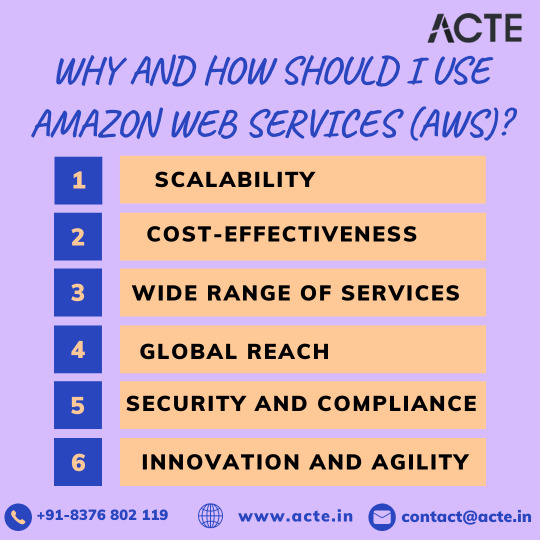#Data Center Security Market by Application
Explore tagged Tumblr posts
Text
The article under the cut
Allies of Elon Musk stationed within the Education Department are considering replacing some contract workers who interact with millions of students and parents annually with an artificial intelligence chat bot, according to internal department documents and communications.
The proposal is part of President Trump’s broader effort to shrink the federal work force, and would mark a major change in how the agency interacts with the public. The Education Department’s biggest job is managing billions of dollars in student aid, and it routinely fields complex questions from borrowers.
The department currently uses both call centers and a rudimentary A.I. bot to answer questions. The proposal would introduce generative A.I., a more sophisticated version of artificial intelligence that could replace many of those human agents.
The call centers employ 1,600 people who field over 15,000 questions per day from student borrowers.
The vision could be a model for other federal agencies, in which human beings are replaced by technology, and behemoth contracts with outside companies are shed or reduced in favor of more automated solutions. In some cases, that technology was developed by players from the private sector who are now working inside or with the Trump administration.
Mr. Musk has significant interest in A.I. He founded a generative A.I. company, and is also seeking to gain control of OpenAI, one of the biggest players in the industry. At other agencies, workers from the newly created Department of Government Efficiency, headed by Mr. Musk, have told federal employees that A.I. would be a significant part of the administration’s cost-cutting plans.
A year after the Education Department oversaw a disastrous rollout of a new federal student aid application, longtime department officials say they are open to the idea of seeking greater efficiencies, as have leaders in other federal agencies. Many are partnering with the efficiency initiative.
But Department of Education staff have also found that a 38 percent reduction in funding for call center operations could contribute to a “severe degradation” in services for “students, borrowers and schools,” according to one internal document obtained by The Times.
The Musk associates working inside the Education Department include former executives from education technology and venture capital firms. Over the past several years, those industries have invested heavily in creating A.I. education tools and marketing them to schools, educators and students.
The Musk team at the department has focused, in part, on a help line that is currently operated on a contract basis by Accenture, a consulting firm, according to the documents reviewed by The Times. The call center assists students who have questions about applying for federal Pell grants and other forms of tuition aid, or about loan repayment.
The contract that includes this work has sent more than $700 million to Accenture since 2019, but is set to expire next week.
“The department is open to using tools and systems that would enhance the customer service, security and transparency of data for students and parents,” said Madi Biedermann, the department’s deputy assistant secretary for communications. “We are evaluating all contracts to assess effectiveness relative to costs.”
Accenture did not respond to interview requests. A September report from the Education Department describes 1,625 agents answering 462,000 calls in one month. The agents also handled 118,000 typed chats.
In addition to the call line, Accenture provides a broad range of other services to the student aid system. One of those is Aidan, a more rudimentary virtual assistant that answers basic questions about student aid. It was launched in 2019, during Mr. Trump’s first term.
Accenture reported in 2021 that Aidan fielded 2.2 million messages in one year. But its capabilities fall far short of what Mr. Musk’s associates envision building using generative A.I., according to the internal documents.
Both Mr. Trump and former President Joseph R. Biden Jr. directed federal agencies to look for opportunities to use A.I. to better serve the public.
The proposal to revamp the communication system follows a meltdown in the rollout of the new Free Application for Federal Student Aid, or FAFSA, last year under Mr. Biden. As FAFSA problems caused mass confusion for students applying for financial aid, several major contractors, including Accenture, were criticized for breakdowns in the infrastructure available to students and parents seeking answers and help.
From January through May last year, roughly three-quarters of the 5.4 million calls to the department’s help lines went unanswered, according to a report by the Government Accountability Office.
More than 500 workers have since been added to the call centers, and wait times were significantly reduced, according to the September Department of Education report.
But transitioning into using generative A.I. for student aid help, as a replacement for some or all human call center workers, is likely to raise questions around privacy, accuracy and equal access to devices, according to technology experts.
Generative A.I. systems still sometimes share information that is false.
Given how quickly A.I. capabilities are advancing, those challenges are potentially surmountable, but should be approached methodically, without rushing, said John Bailey, a fellow at the American Enterprise Institute and former director of educational technology at the Education Department under President George W. Bush.
Mr. Bailey has since become an expert on the uses of A.I. in education.
“Any big modernization effort needs to be rolled out slowly for testing, to see what works and doesn’t work,” he said, pointing to the botched introduction of the new FAFSA form as a cautionary tale.
“We still have kids not in college because of that,” he said.
In recent weeks, the Education Department has absorbed a number of DOGE workers, according to two people familiar with the process, who requested anonymity because they were not authorized to discuss the department’s security procedures and feared for their jobs.
One of the people involved in the DOGE efforts at the Education Department is Brooks Morgan, who until recently was the chief executive of Podium Education, an Austin-based start-up, and has also worked for a venture capital firm focused on education technology, according to the two people.
Another new staffer working at the agency is Alexandra Beynon, the former head of engineering at Mindbloom, a company that sells ketamine, according to those sources and an internal document.
And a third is Adam Ramada, who formerly worked at a Miami venture capital firm, Spring Tide Capital, which invests in health technology, according to an affidavit in a lawsuit filed against the Department of Government Efficiency.
None of those staffers responded to interview requests.
41 notes
·
View notes
Text
Is AI fr gonna steal our jobs?
Disclaimer: This post is mostly speculative and meant to encourage discussion and different perspectives on the topic.
Some time ago, I along with many others thought that AI was mostly going to aid in all the task centered, administrative, repetitive jobs. Cashiers, factory workers, call center workers, all the jobs that would benefit from automation were being taken over by AI.
When the ghibli trend came around, it was a guttural shock to many artists.
What used to generate questionable and bad looking art has now developed and is transitioning to generating high quality pieces, videos, music, animation and what not. In a matter of mere months. [AI tools example: midjourney, DALL-E, ChatGPT]

Art is not simply something pretty to look at. It is the accumulation of experiences, emotions and essense of humans. Art is their unique expression and the lens with which they see the world.
This blog is not an argument against the use of AI for art, but a call to understand what it really means.
Did most people see it coming when AI mimicked it with precision?
How long before it starts mimicking creativity, intuition, emotion and depth, all of what we thought was deeply and uniquely human?
"AI works by learning from lots of information, recognizing patterns, and using that knowledge to make decisions or do tasks like a human would." - Chatgpt.
Some time ago, the dominant argument was that AI might be able copy the strokes of a painting, the words of a novel. But it cannot hold the hands of another human and tell them all was well, it cannot feel and experience the real world like us, it cannot connect with humans and it cant innovate and envision new solutions.
If you still believe this, I urge you to go to chatgpt right now and open up to it like it was your friend. It will provide consolidation and advice tailored so well to your individual behaviours that it might feel better than talking to your bestfriend.
What is a deep neurological, experience based and emotional reaction to us is simply just analysis and application of data and patterns to AI. And the difference? Not easily distinguishable to the average human.
As long as the end result is not compromised, it doesnt matter to client and employers whether the process was human or not. Efficiency is often prioritized above substance. And now even substance is being mimicked.
Currently, the prominent discussion online is that in order to improve your job security, we need to master AI tools. Instead of fighting for stability(which is nothing but an illusion now) we need to ride the waves of the new age flooding towards us, and work with Ai instead of fighting against the change.
But the paradox is, the more we use AI the quicker it will learn from us, the quicker it will reduce the need for human guidance and supervision, and the quicker it will replace us.
Times are moving fast. We need everyone to be aware of the rate at which the world is changing and the things that are going on beneath the surface. If we simply take information at face value and avoid research, give it a few years or even months of time, and noone will know what hit us.
"Use of generative AI increased from 33% in 2023 to 71% in 2024. Use of AI by business function for the latest data varied from 36% in IT to 12% in manufacturing. Use of gen AI by business function for the latest data varied from 42% in marketing and sales to 5% in manufacturing."-Mckinsey, Mar 12, 2025.
By 2030, 14% of employees will have been forced to change their career because of- AI-McKinsey.
Since 2000, automation has resulted in 1.7 million manufacturing jobs being lost -BuiltIn
There is a radical change taking momentum right now. It's gonna be humans vs AI starting from the job aspect of the world.
Its not a matter of which jobs and skills are AI proof but which ones is AI likely to take over last.

What I predict personally, is that soon the world leaders are going to have to make a transformative choice.
This can either lead to a world where humans can be provided with money and resources instead of working to earn, as AI generates profit, and we can lay back and enjoy the things we love doing.
Or the other option is that we are going to have to live by scraps as small elite groups take over all the resources and tech.
Dystopia or utopia? The line is blurred.
Thankfully, for now, the choice is in human hands.

#ai generated#awareness#AI awareness#Ai#job security#ai job#ai vs humans#ai discussion#ai artwork#ai automation#rant post#ai speculation#ai blog
6 notes
·
View notes
Text
On April 15, U.S. chipmaker Nvidia published a filing to the U.S. Securities and Exchange Commission indicating that the government has restricted the company from selling its less advanced graphics processing unit (GPU)—the H20—to China. The company is now required to obtain a license from the U.S. Commerce Department’s Bureau of Industry and Security to sell the H20 and any other chips “achieving the H20’s memory bandwidth, interconnect bandwidth, or combination thereof” to China, according to the filing.
Similarly, a filing from AMD stated that the firm is now restricted from selling its MI308 GPU to China—and likely any chips that have equal or higher performance in the future. Intel’s artificial intelligence accelerator Gaudi will also be restricted under the new control threshold, which reportedly appears to limit chips with total DRAM bandwidth of 1,400 gigabytes per second or more, input/output bandwidth of 1,100 GB per second or more, or a total of both of 1,700 GB per second or more.
The possible new threshold not only restricts the advanced chips that were already controlled but also the less advanced chips from Nvidia, AMD, and other chipmakers, including Nvidia’s H20, AMD’s MI308X, and Intel’s Gaudi, which were used to comply with the export control threshold and intended primarily for sale in the Chinese market.
The new restriction came roughly a week after NPR reported that the Trump administration had decided to back off on regulating the H20. Prior to that report, curbs on the H20 and chips with comparable performance had been widely anticipated by analysts on Wall Street, industry experts in Silicon Valley, and policy circles in Washington.
The latest set of chip controls could be seen as following on from export restrictions during the Biden administration and as continuation of the Trump administration’s efforts to limit China’s access to advanced AI hardware. But the new measure carries far-reaching industry implications that could fundamentally reshape the landscape of China’s AI chip market.
The impact of the new rule on the industry is profound. With the new controls, Nvidia is estimated to immediately lose about $15 billion to $16 billion, according to a J.P. Morgan analysis. AMD, on the other hand, faces $1.5 billion to 1.8 billion in lost revenue, accounting for roughly 10 percent of its estimated data center revenue this year.
Yet the implications go beyond immediate financial damage. If the restriction persists, it will fundamentally reshape the Chinese AI chip market landscape and mark the start of a broader retreat for U.S. AI accelerators from China. That includes not only GPU manufacturers such as Nvidia, AMD, and Intel but also firms providing application-specific integrated circuits—another type of chips targeting specific AI workloads, such as Google’s TPU and Amazon Web Servies’ Trainium.
The new rule will make it nearly impossible for U.S. firms such as Nvidia and AMD to design and sell chips that are export-compliant and competitive in the Chinese market. That means these firms’ market share in the Chinese AI chip market will decline over time, as they are forced to withdraw almost all of their offerings of both advanced and less advanced chips while Chinese firms gradually capture the remaining market.
The H20 and the upgraded H20E are already only marginally ahead of their Chinese competitors. Huawei’s latest AI chip Ascend 910C delivers 2.6 times the computational performance of the H20, although it offers 20 percent less memory bandwidth, which is vital for the inference training and reasoning models that are a key part of modern AI.
The H20’s memory bandwidth, along with Nvidia’s widely adopted software stack, a parallel computing platform and programming model that enables efficient GPU utilization for AI, high-performance computing, and scientific workloads, have been key differentiators driving demand from Chinese AI firms and keeping them competitive in the Chinese market. China acquired more than 1 million units of the H20 in 2024 and has been stockpiling the chip in response to looming concerns about controls since early 2025.
The narrowing gap between the H20 and Huawei’s 910C highlights the growing ability of Chinese AI chipmakers to meet domestic compute demand without foreign GPUs. As of today, Huawei’s 910C is in mass production, with units already delivered to customers and broader mass shipments reportedly starting in May. Most recently, Huawei is reportedly approaching customers about testing its enhanced version of the 910-series GPU—the 910D. Its next-generation chip—the Ascend 920—is expected to enter mass production in the second half of 2025.
Notably, Huawei is just one of many Chinese firms poised to fill the gap left by U.S. suppliers. Chinese AI chip companies such as Cambricon, Hygon, Enflame, Iluvatar CoreX, Biren, and Moore Threads are actively developing more competitive domestic AI chips to capture this expanding market.
Over the next few years, Chinese firms such as Alibaba, ByteDance, Baidu, and Tencent will likely continue to rely on existing inventories of Nvidia and AMD chips—such as the H100, H200, H800, and H20—acquired prior to the implementation of export controls. For example, ByteDance’s current GPU inventory in China is rumored to include 16,000-17,000 units of the A100, 60,000 units of the A800, and 24,000-25,000 units of the H800. Its overseas businesses likely have more than 20,000 units of the H100, 270,000 of the H20, and tens of thousands of cards such as the L20 and L40.
Advanced chips, including the limited amount of Nvidia’s Blackwell-series GPUs, may also continue entering the Chinese market via illicit or gray-market channels, given the enduring performance advantage and wide adoption of these chips over most Chinese domestic alternatives. The Blackwell GPUs and other cutting-edge chips could still be sold legally to the oversea data centers of leading Chinese AI companies to potentially train their AI models.
Similarly, other leading Chinese AI firms still possess significant chip stockpiles. Assuming export controls continue to restrict Chinese AI companies’ access to advanced computing resources, existing GPU inventories should still enable model development over the next several years. Typically, GPUs have a four- to five-year depreciation lifecycle, providing a window during which Chinese domestic GPU manufacturers can advance their capabilities and begin supplying more competitive chips to support domestic AI development.
Ultimately, time is now on the Chinese firms’ side. As inventories of foreign GPUs gradually depreciate and become obsolete, Chinese firms are expected to shift toward and adopt more domestically produced AI chips to meet ongoing compute needs at a time when local chipmakers offer more powerful alternatives. China’s overall computing demand will steadily rise, given the continued advancement of the AI industry, and such incremental growth in demand will likely be met by Chinese AI chipmakers.
As a result, the tens of billions of dollars in revenue that would have gone to Nvidia and AMD will be gradually captured by Chinese AI firms in the coming years. In a rough assessment, the latest ban causes Nvidia and AMD instant losses of about $16.5 billion to $17.8 billion—about 70 percent of what Huawei spent on research and development in 2024.
This new market paradigm will not only strengthen the market position and financial sustainability of domestic Chinese AI chipmakers but also enhance their capacity to reinvest in R&D. In turn, this will accelerate innovation, improve competitiveness, and fortify China’s broader AI hardware supply chain—ultimately contributing to the long-term resilience and advancement of Chinese AI capabilities.
More importantly, the growing domestic adoption of Chinese GPUs enables local firms to refine their products more efficiently through accelerated and larger feedback loops from local enterprises. As the Nvidia-led GPU ecosystem stalls and gradually retreats from the Chinese market, this shift creates space for local players to build a domestic GPU ecosystem—one that may increasingly lock out foreign competitors and raise re-entry barriers over time.
A total ban on the H20 would likely slow China’s short-term growth in AI compute capacity by removing a key source of advanced chips. But the medium- to longer-term impact is less clear. Chinese AI companies, as previously noted, remain very capable of developing their AI by using a large number of existing Nvidia and AMD GPUs for the next few years, alongside a growing supply of improving domestic alternatives. The U.S. leadership’s ultimate goal of using export controls to constrain China’s AI development remains uncertain, as the gap between the two countries’ AI model capabilities appears to be narrowing rather than widening.
What is clear, however, is the broader industry impact of the new controls. If sustained, they will mark the beginning of a major withdrawal of U.S. AI chipmakers from the Chinese market—paving the way for a significant boost to domestic Chinese AI chipmakers. In trying to isolate China, the United States may end up giving Chinese firms a leg up.
3 notes
·
View notes
Text
Benefits Of Conversational AI & How It Works With Examples

What Is Conversational AI?
Conversational AI mimics human speech. It’s made possible by Google’s foundation models, which underlie new generative AI capabilities, and NLP, which helps computers understand and interpret human language.
How Conversational AI works
Natural language processing (NLP), foundation models, and machine learning (ML) are all used in conversational AI.
Large volumes of speech and text data are used to train conversational AI systems. The machine is trained to comprehend and analyze human language using this data. The machine then engages in normal human interaction using this information. Over time, it improves the quality of its responses by continuously learning from its interactions.
Conversational AI For Customer Service
With IBM Watsonx Assistant, a next-generation conversational AI solution, anyone in your company can easily create generative AI assistants that provide customers with frictionless self-service experiences across all devices and channels, increase employee productivity, and expand your company.
User-friendly: Easy-to-use UI including pre-made themes and a drag-and-drop chat builder.
Out-of-the-box: Unconventional To better comprehend the context of each natural language communication, use large language models, large speech models, intelligent context gathering, and natural language processing and understanding (NLP, NLU).
Retrieval-augmented generation (RAG): It based on your company’s knowledge base, provides conversational responses that are correct, relevant, and current at all times.
Use cases
Watsonx Assistant may be easily set up to accommodate your department’s unique requirements.
Customer service
Strong client support With quick and precise responses, chatbots boost sales while saving contact center funds.
Human resources
All of your employees may save time and have a better work experience with HR automation. Questions can be answered by staff members at any time.
Marketing
With quick, individualized customer service, powerful AI chatbot marketing software lets you increase lead generation and enhance client experiences.
Features
Examine ways to increase production, enhance customer communications, and increase your bottom line.
Artificial Intelligence
Strong Watsonx Large Language Models (LLMs) that are tailored for specific commercial applications.
The Visual Builder
Building generative AI assistants using to user-friendly interface doesn’t require any coding knowledge.
Integrations
Pre-established links with a large number of channels, third-party apps, and corporate systems.
Security
Additional protection to prevent hackers and improper use of consumer information.
Analytics
Comprehensive reports and a strong analytics dashboard to monitor the effectiveness of conversations.
Self-service accessibility
For a consistent client experience, intelligent virtual assistants offer self-service responses and activities during off-peak hours.
Benfits of Conversational AI
Automation may save expenses while boosting output and operational effectiveness.
Conversational AI, for instance, may minimize human error and expenses by automating operations that are presently completed by people. Increase client happiness and engagement by providing a better customer experience.
Conversational AI, for instance, may offer a more engaging and customized experience by remembering client preferences and assisting consumers around-the-clock when human agents are not present.
Conversational AI Examples
Here are some instances of conversational AI technology in action:
Virtual agents that employ generative AI to support voice or text conversations are known as generative AI agents.
Chatbots are frequently utilized in customer care applications to respond to inquiries and offer assistance.
Virtual assistants are frequently voice-activated and compatible with smart speakers and mobile devices.
Software that converts text to speech is used to produce spoken instructions or audiobooks.
Software for speech recognition is used to transcribe phone conversations, lectures, subtitles, and more.
Applications Of Conversational AI
Customer service: Virtual assistants and chatbots may solve problems, respond to frequently asked questions, and offer product details.
E-commerce: Chatbots driven by AI can help customers make judgments about what to buy and propose products.
Healthcare: Virtual health assistants are able to make appointments, check patient health, and offer medical advice.
Education: AI-powered tutors may respond to student inquiries and offer individualized learning experiences.
In summary
The way to communicate with robots might be completely changed by the formidable technology known as conversational AI. Also can use its potential to produce more effective, interesting, and customized experiences if it comprehend its essential elements, advantages, and uses.
Read more on Govindhech.com
#ConversationalAI#AI#NLP#machinelearning#generativeAI#LLM#AIchatbot#News#Technews#Technology#Technologynews#Technologytrends#Govindhtech
3 notes
·
View notes
Text
Top Futuristic AI Based Applications by 2024
2024 with Artificial Intelligence (AI) is the backdrop of what seems to be another revolutionary iteration across industries. AI has matured over the past year to provide novel use cases and innovative solutions in several industries. This article explores most exciting AI applications that are driving the future.
1. Customized Chatbots
The next year, 2024 is seeing the upward trajectory of bespoke chatbots. Google, and OpenAI are creating accessible user-friendly platforms that enable people to build their own small-scale chatbots for particular use cases. These are the most advanced Chatbots available in the market — Capable of not just processing text but also Images and Videos, giving a plethora of interactive applications. For example, estate agents can now automatically create property descriptions by adding the text and images of listings thatsurgent.
2. AI in Healthcare

AI has found numerous applications in the healthcare industry, from diagnostics to personalized treatment plans. After all, AI-driven devices can analyze medical imaging material more accurately than humans and thus among other things help to detect diseases such as cancer at an early stage. They will also describe how AI algorithms are used to create tailored treatment strategies personalized for each patient's genetics and clinical past, which helps enable more precise treatments.
3. Edge AI
A major trend in 2024 is Edge AI It enables computer processing to be done at the edge of a network, rather than in large data centers. Because of its reduced latency and added data privacy, Edge AI can be used in applications like autonomous vehicles transportations, smart cities as well as industrial automation. Example, edge AI in autonomous vehicles is able to get and process real-time data, increasing security by allowing faster decision-making.
4. AI in Finance

Today, the financial sector is using AI to make better decisions and provide an even stronger customer experience. Fraud detection, risk assessment and customised financial advice have introduced insurance into the AI algorithm. AI-powered chatbots and virtual assistants are now common enough to be in use by 2024, greatly assisting customers stay on top of their financial well-being. Those tools will review your spending behavior, write feedback to you and even help with some investment advices.
5. AI in Education
AI is revolutionizing education with individualized learning. These AI-powered adaptive learning platforms use data analytics to understand how students fare and produces a customised educational content (Hoos, 2017). This way, students get a tailored experience and realize better outcomes. Not only that, AI enabled tools are also in use for automating administrative tasks which shortens the time required by educators on teaching.
6. AI in Job Hunting

This is also reverberating in the job sector, where AI technology has been trending. With tools like Canyon AI Resume Builder, you can spin the best resumé that might catch something eye catchy recruiter among a dozen others applications he receives in-between his zoom meeting. Using AI based tools to analyze Job Descriptions and match it with the required skills, experience in different job roles help accelerating the chances of a right fit JOB.
7. Artificial Intelligence in Memory & Storage Solutions
Leading AI solutions provider Innodisk presents its own line of memory and storage with added in-house designed AI at the recent Future of Memory & Storage (FMS) 2024 event. Very typically these are solutions to make AI applications easier, faster and better by improving performance scalability as well on the quality. This has huge implications on sectors with substantial data processing and storage demands (healthcare, finance, self-driving cars).
Conclusion

2024 — Even at the edge of possible, AI is revolutionizing across many industries. AI is changing our lives from tailored chatbots and edge AI to healthcare, finance solutions or education and job search. This will not only improve your business profile as a freelancer who create SEO optimized content and write copies but also give your clients in the writing for business niche some very useful tips.
#ai#ai in healthcare#ai in finance#ai in wealth management#ai in business#AI trends#artificial intelligence#advanced technologies#innovation#technological advancements
4 notes
·
View notes
Text
VPS Windows Hosting in India: The Ultimate Guide for 2024

In the ever-evolving landscape of web hosting, Virtual Private Servers (VPS) have become a preferred choice for both businesses and individuals. Striking a balance between performance, cost-effectiveness, and scalability, VPS hosting serves those seeking more than what shared hosting provides without the significant expense of a dedicated server. Within the myriad of VPS options, VPS Windows Hosting stands out as a popular choice for users who have a preference for the Microsoft ecosystem.
This comprehensive guide will explore VPS Windows Hosting in India, shedding light on its functionality, key advantages, its relevance for Indian businesses, and how to select the right hosting provider in 2024.
What is VPS Windows Hosting?
VPS Windows Hosting refers to a hosting type where a physical server is partitioned into various virtual servers, each operating with its own independent Windows OS. Unlike shared hosting, where resources are shared among multiple users, VPS provides dedicated resources, including CPU, RAM, and storage, which leads to enhanced performance, security, and control.
Why Choose VPS Windows Hosting in India?
The rapid growth of India’s digital landscape and the rise in online businesses make VPS hosting an attractive option. Here are several reasons why Windows VPS Hosting can be an optimal choice for your website or application in India:
Seamless Compatibility: Windows VPS is entirely compatible with Microsoft applications such as ASP.NET, SQL Server, and Microsoft Exchange. For websites or applications that depend on these technologies, Windows VPS becomes a natural option.
Scalability for Expanding Businesses: A notable advantage of VPS hosting is its scalability. As your website or enterprise grows, upgrading server resources can be done effortlessly without downtime or cumbersome migration. This aspect is vital for startups and SMEs in India aiming to scale economically.
Localized Hosting for Improved Speed: Numerous Indian hosting providers have data centers within the country, minimizing latency and enabling quicker access for local users, which is particularly advantageous for targeting audiences within India.
Enhanced Security: VPS hosting delivers superior security compared to shared hosting, which is essential in an era where cyber threats are increasingly prevalent. Dedicated resources ensure your data remains isolated from others on the same physical server, diminishing the risk of vulnerabilities.
Key Benefits of VPS Windows Hosting
Dedicated Resources: VPS Windows hosting ensures dedicated CPU, RAM, and storage, providing seamless performance, even during traffic surges.
Full Administrative Control: With Windows VPS, you gain root access, allowing you to customize server settings, install applications, and make necessary adjustments.
Cost Efficiency: VPS hosting provides the advantages of dedicated hosting at a more economical price point. This is incredibly beneficial for businesses looking to maintain a competitive edge in India’s market.
Configurability: Whether you require specific Windows applications or custom software, VPS Windows hosting allows you to tailor the server to meet your unique needs.
Managed vs. Unmanaged Options: Depending on your technical ability, you can opt for managed VPS hosting, where the provider manages server maintenance, updates, and security, or unmanaged VPS hosting, where you retain full control of the server and its management.
How to Select the Right VPS Windows Hosting Provider in India
With a plethora of hosting providers in India offering VPS Windows hosting, selecting one that meets your requirements is crucial. Here are several factors to consider:
Performance & Uptime: Choose a hosting provider that guarantees a minimum uptime of 99.9%. Reliable uptime ensures your website remains accessible at all times, which is crucial for any online venture.
Data Center Location: Confirm that the hosting provider has data centers located within India or in proximity to your target users. This will enhance loading speeds and overall user satisfaction.
Pricing & Plans: Evaluate pricing plans from various providers to ensure you’re receiving optimal value. Consider both initial costs and renewal rates, as some providers may offer discounts for longer commitments.
Customer Support: Opt for a provider that offers 24/7 customer support, especially if you lack an in-house IT team. Look for companies that offer support through various channels like chat, phone, and email.
Security Features: Prioritize providers offering robust security features such as firewall protection, DDoS mitigation, automatic backups, and SSL certificates.
Backup and Recovery: Regular backups are vital for data protection. Verify if the provider includes automated backups and quick recovery options for potential issues.
Top VPS Windows Hosting Providers in India (2024)
To streamline your research, here's a brief overview of some of the top VPS Windows hosting providers in India for 2024:
Host.co.in
Recognized for its competitive pricing and exceptional customer support, Host.co.in offers a range of Windows VPS plans catering to businesses of various sizes.
BigRock
Among the most well-known hosting providers in India, BigRock guarantees reliable uptime, superb customer service, and diverse hosting packages, including Windows VPS.
MilesWeb
MilesWeb offers fully managed VPS hosting solutions at attractive prices, making it a great option for businesses intent on prioritizing growth over server management.
GoDaddy
As a leading name in hosting, GoDaddy provides flexible Windows VPS plans designed for Indian businesses, coupled with round-the-clock customer support.
Bluehost India
Bluehost delivers powerful VPS solutions for users requiring high performance, along with an intuitive control panel and impressive uptime.
Conclusion
VPS Windows Hosting in India is an outstanding option for individuals and businesses in search of a scalable, cost-effective, and performance-oriented hosting solution. With dedicated resources and seamless integration with Microsoft technologies, it suits websites that experience growing traffic or require ample resources.
As we advance into 2024, the necessity for VPS Windows hosting is expected to persist, making it imperative to choose a hosting provider that can accommodate your developing requirements. Whether launching a new website or upgrading your existing hosting package, VPS Windows hosting is a strategic investment for the future of your online endeavors.
FAQs
Is VPS Windows Hosting costly in India?
While VPS Windows hosting is pricier than shared hosting, it is much more affordable than dedicated servers and many providers in India offer competitive rates, making it accessible for small and medium-sized enterprises.
Can I upgrade my VPS Windows Hosting plan easily?
Absolutely, VPS hosting plans provide significant scalability. You can effortlessly enhance your resources like CPU, RAM, and storage without experiencing downtime.
What type of businesses benefit from VPS Windows Hosting in India?
Businesses that demand high performance, improved security, and scalability find the most advantage in VPS hosting. It’s particularly ideal for sites that utilize Windows-based technologies like ASP.NET and SQL Server.
2 notes
·
View notes
Text
Airbus: Soaring High in the Drone Market

Introduction:
Airbus S.A.S., a global leader in the aerospace industry, has made significant inroads into the rapidly expanding Drone Market. Renowned for its expertise in aviation and aerospace technology, Airbus is leveraging its core competencies to redefine the landscape of drone delivery and aerial mobility.
Download FREE Sample: https://www.nextmsc.com/drone-market/request-sample
Airbus' Strategic Approach: A Holistic Ecosystem
Airbus' strategy in the drone market centers on a holistic approach that encompasses:
Core Competencies: Leveraging expertise in aerospace engineering, manufacturing, and systems integration to develop advanced drone platforms.
Urban Air Mobility (UAM): Integrating drone delivery services into a broader UAM ecosystem, encompassing passenger drones, cargo drones, and air taxis.
Infrastructure Development: Investing in the development of drone infrastructure, including charging stations, landing pads, and air traffic management systems.
Data Analytics and Optimization: Utilizing data analytics to optimize drone delivery routes, improve efficiency, and enhance customer experience.
Regulatory Engagement: Actively participating in the development of drone regulations to shape a favorable regulatory environment.
Inquire before buying: https://www.nextmsc.com/drone-market/inquire-before-buying
Airbus' Contributions to the Drone Market
Airbus' contributions to the drone market are multifaceted:
Advanced Drone Platforms: The company is developing cutting-edge drone platforms with extended range, payload capacity, and flight autonomy.
Hybrid Drone Concepts: Airbus is exploring hybrid drone designs that combine the advantages of fixed-wing and multi-rotor configurations.
Urban Air Mobility Ecosystem: The company is actively involved in developing a comprehensive UAM ecosystem, including drones, ground infrastructure, and air traffic management systems.
Integration with Existing Aviation Systems: Airbus is leveraging its expertise in aviation to seamlessly integrate drone operations into the broader airspace.
Focus on Safety and Security: The company prioritizes safety and security, incorporating advanced technologies and rigorous testing into drone development.
Airbus' Role in Shaping the Future
Airbus' strategic vision positions the company as a key player in shaping the future of the drone market. The company is likely to focus on:
Expanding Drone Capabilities: Developing drones with advanced features such as autonomous navigation, obstacle avoidance, and payload flexibility.
Global Market Expansion: Expanding drone delivery services to new markets and regions, leveraging Airbus' global presence.
Sustainability: Incorporating sustainable practices into drone operations, using eco-friendly materials and reducing noise pollution.
Public-Private Partnerships: Collaborating with governments, cities, and other stakeholders to accelerate drone adoption.
Data Monetization: Leveraging data collected from drone operations to create new revenue streams and insights.
Case Studies: Airbus' Impact
To illustrate Airbus' role in the drone market, consider the following examples:
CityAirbus: Airbus' electric vertical take-off and landing (eVTOL) aircraft concept demonstrates the company's commitment to urban air mobility and its potential application for drone delivery.
Cargo Drone Development: Airbus is actively developing cargo drones with increased payload capacity for delivering heavier packages.
Drone Infrastructure Investments: The company is investing in the development of droneports and charging stations to support the growth of drone delivery services.
Airbus' Focus on Urban Air Mobility (UAM)
Airbus sees UAM as a key growth area and is investing heavily in developing a comprehensive ecosystem. The company's vision includes:
Passenger Drones: Developing passenger drones for urban transportation, reducing traffic congestion, and improving mobility.
Cargo Drones: Integrating cargo drones into the urban logistics network for efficient delivery of goods and services.
Air Traffic Management: Developing advanced air traffic management systems for safe and efficient drone operations in urban environments.
Infrastructure Development: Building the necessary infrastructure, including vertiports and charging stations, to support UAM operations.
Challenges and Opportunities
While Airbus is a major player in the drone market, the company faces challenges such as regulatory hurdles, public acceptance, and technological limitations. However, the potential rewards are significant, including increased market share, revenue generation, and the opportunity to redefine urban transportation.
Airbus' focus on UAM and its ability to integrate drones into the broader aviation ecosystem position the company well to capitalize on the growing demand for air mobility solutions. By addressing challenges and leveraging opportunities, Airbus can solidify its leadership position in the drone market.
Conclusion
Airbus, with its deep-rooted expertise in aerospace engineering and a global presence, is poised to be a major player in the drone market. The company's focus on urban air mobility, coupled with its commitment to innovation and sustainability, positions it well for future growth.
As the drone market continues to evolve, Airbus' ability to adapt to changing market dynamics and technological advancements will be crucial for maintaining its leadership position. The company's success in developing safe, efficient, and environmentally friendly drone solutions will be essential for building public trust and expanding the adoption of drone technology.
3 notes
·
View notes
Text
A Step-by-Step Guide to Setting Up a Micro ATM in Your Community

Micro ATMs are instrumental in enhancing financial inclusion by providing basic banking services in underserved areas. Setting up a Micro ATM in your community can significantly improve access to financial services and empower local businesses. Here’s a comprehensive guide on how to establish a Micro ATM:
1. Research and Planning
Before setting up a Micro ATM, conduct thorough research to understand the regulatory requirements, market demand, and infrastructure needs in your community. Identify potential locations where the demand for banking services is high but access to traditional banks is limited.
Key Considerations:
Regulatory Compliance: Ensure compliance with local regulations and licensing requirements for operating a Micro ATM.
Market Demand: Assess the demand for banking services and potential customer base in your community.
Infrastructure: Evaluate the availability of electricity, internet connectivity, and mobile network coverage in the chosen location.
2. Selecting a Micro ATM Provider
Choose a reputable Micro ATM provider that offers reliable devices, secure transaction processing, and technical support. Consider factors such as cost-effectiveness, ease of integration with existing banking networks, and customer service quality.
Criteria for Selecting a Provider:
Device Reliability: Ensure the Micro ATM device is robust, durable, and equipped with necessary security features (biometric authentication, PIN protection).
Transaction Fees: Compare transaction fees and operational costs associated with different providers to choose the most cost-effective option.
Technical Support: Opt for a provider that offers responsive technical support and maintenance services to minimize downtime.
3. Acquiring Necessary Permissions and Licenses
Obtain the required permissions and licenses from regulatory authorities to operate a Micro ATM in your community. This may include approvals from banking regulators, local authorities, and relevant government agencies.
Steps Involved:
Banking Partner: Establish a partnership with a licensed bank or financial institution that can provide backend support for transaction processing and settlement.
Local Authorities: Obtain permits or clearances from local authorities for installing and operating the Micro ATM at the chosen location.
4. Installation and Setup
Once you have selected a provider and secured necessary permissions, proceed with the installation and setup of the Micro ATM. Ensure proper installation to optimize functionality and security.
Installation Steps:
Location Selection: Choose a secure and accessible location with adequate foot traffic, such as near markets, community centers, or local shops.
Power Supply: Ensure continuous power supply for the Micro ATM through mains electricity or alternative power sources (e.g., solar panels in remote areas).
Connectivity: Establish reliable internet connectivity or mobile network coverage for seamless transaction processing.
5. Testing and Calibration
After installation, conduct thorough testing and calibration of the Micro ATM to ensure all functions are working correctly. Test transaction processing, biometric authentication (if applicable), receipt printing, and connectivity.
Testing Procedures:
Transaction Tests: Perform test transactions using different payment methods (cash withdrawal, deposit, fund transfer) to verify system reliability.
Security Checks: Test security features such as PIN protection, biometric verification, and data encryption to safeguard customer transactions.
User Interface: Evaluate the user interface for ease of use and clarity of instructions for customers conducting transactions.
6. Training and Awareness
Train local operators and users on how to use the Micro ATM effectively and securely. Conduct awareness campaigns to educate the community about the benefits of using the Micro ATM for banking transactions.
Training Components:
Operational Training: Train operators on operating procedures, troubleshooting common issues, and maintaining the Micro ATM.
Customer Education: Educate customers on how to use the Micro ATM for various transactions, security best practices, and the importance of banking formalization.
7. Launching and Promoting the Micro ATM
Officially launch the Micro ATM and promote its availability to the community. Use local channels such as community meetings, posters, and word-of-mouth to inform residents about the new banking service.
Promotional Strategies:
Community Outreach: Engage with local community leaders, businesses, and organizations to promote the benefits of using the Micro ATM.
Demonstrations: Conduct live demonstrations of the Micro ATM’s features and functionality to attract potential users and build trust.
Incentives: Offer promotional incentives such as reduced transaction fees or rewards for early adopters to encourage initial usage.
8. Monitoring and Maintenance
Regularly monitor the performance of the Micro ATM and address any technical or operational issues promptly. Implement routine maintenance and security updates to ensure optimal performance and reliability.
Monitoring Activities:
Transaction Monitoring: Track transaction volumes, types, and frequency to gauge usage patterns and customer preferences.
Maintenance Schedule: Schedule regular maintenance checks and software updates to keep the Micro ATM operating smoothly and securely.
Customer Feedback: Gather feedback from users to identify areas for improvement and enhance customer satisfaction.
Conclusion
Setting up a Micro ATM in your community can significantly enhance financial inclusion by providing accessible and affordable banking services to underserved populations. By following this step-by-step guide—from initial research and planning to installation, testing, training, and promotion—you can contribute to empowering local businesses and individuals through improved access to financial services. As Micro ATMs continue to evolve, their role in fostering economic development and financial empowerment in developing countries becomes increasingly pivotal.
2 notes
·
View notes
Text
Transforming the Health Landscape: The Global Blockchain in Healthcare Market

The integration of blockchain technology into the healthcare sector is revolutionizing the way medical data is managed, shared, and secured. As the demand for transparent, efficient, and secure healthcare services grows, blockchain offers promising solutions to longstanding challenges.
Understanding Blockchain in Healthcare
Blockchain Technology is a decentralized digital ledger that records transactions across multiple computers in a way that ensures the security and transparency of data. In healthcare, blockchain can be used to manage patient records, track pharmaceuticals, ensure the integrity of clinical trials, and streamline administrative processes. The immutable nature of blockchain helps in preventing data breaches, ensuring data accuracy, and enhancing patient privacy.
According to BIS Research, the Global Blockchain in Healthcare Market was estimated to grow to a value of $5.61 billion by 2025, and still the market is showing a steep growth till 2030 witnessing a double-digit CAGR growth rate throughout the forecast period.
Key Market Dynamics
Several factors are driving the growth of the global blockchain in healthcare market:
Data Security and Privacy:
Need for robust data security and privacy solutions.
Healthcare data breaches are a growing concern.
Blockchain's secure, immutable nature protects sensitive patient information.
Interoperability and Data Sharing:
Facilitates seamless data sharing between healthcare providers and systems.
Overcomes current interoperability issues.
Leads to better patient outcomes by providing a comprehensive view of health history.
Supply Chain Transparency:
Tracks the entire lifecycle of drugs in the pharmaceutical industry.
Ensures the authenticity of medications.
Helps combat counterfeit drugs.
Efficient Administrative Processes:
Streamlines various administrative processes, such as billing and claims management.
Reduces fraud and administrative costs.
Support from Regulatory Bodies:
Increasing support from regulatory bodies and governments.
Initiatives by FDA and EMA to explore blockchain for drug traceability and clinical trials boost market growth.
Request for an updated Research Report on Global Blockchain in Healthcare Market Research.
Global Blockchain in Healthcare Industry Segmentation
Segmentation by Application:
Data Exchange and Interoperability
Supply Chain Management
Claims Adjudication and Billing Management
Clinical Trials and Research
Others
Segmentation by End-User:
Healthcare Providers
Pharmaceutical Companies
Payers
Others
Segmentation by Region:
North America
Europe
Asia-Pacific
Latin America and Middle East & Africa
Future Market Prospects
The future of the global blockchain in healthcare market looks promising, with several trends likely to shape its trajectory:
Integration with AI and IoT: The integration of blockchain with artificial intelligence (AI) and the Internet of Things (IoT) will enhance data analytics, predictive healthcare, and real-time monitoring.
Expansion of Use Cases: New use cases for blockchain in digital healthcare will emerge, including patient-centered care models, personalized medicine, and enhanced telemedicine services.
Focus on Patient-Centric Solutions: Blockchain will enable more patient-centric healthcare solutions, empowering patients with greater control over their health data and enhancing patient engagement.
Development of Regulatory Frameworks: The establishment of clear regulatory frameworks and industry standards will facilitate the widespread adoption of blockchain in healthcare.
Conclusion
The Global Blockchain in Healthcare Industry is poised for significant growth, driven by the need for enhanced data security, interoperability, supply chain transparency, and efficient administrative processes. By addressing challenges related to regulatory compliance, implementation costs, standardization, and scalability, and leveraging opportunities in technological advancements, investments, partnerships, and government initiatives, the potential of blockchain in healthcare can be fully realized. This technology promises to revolutionize healthcare delivery, enhancing efficiency, transparency, and patient outcomes, and setting new standards for the future of digital health.
#Blockchain in Healthcare Market#Blockchain in Healthcare Industry#Blockchain in Healthcare Market Report#Blockchain in Healthcare Market Research#Blockchain in Healthcare Market Forecast#Blockchain in Healthcare Market Analysis#Blockchain in Healthcare Market Growth#BIS Research#Healthcare
2 notes
·
View notes
Text
AWS Unveiled: Exploring the Boundless Horizons of Cloud Computing
Introduction: Embarking on the AWS Expedition
In the ever-evolving digital sphere, Amazon Web Services (AWS) emerges as a formidable player, revolutionizing the landscape of cloud computing and redefining the way businesses operate in the digital era. Offering an extensive array of cloud services, AWS serves as a catalyst for innovation, empowering organizations to scale, adapt, and thrive in a rapidly changing environment. Let's embark on an expedition into the realm of AWS, unraveling its diverse offerings and uncovering the transformative potential it holds for businesses across industries.

Decoding AWS: A Gateway to Digital Transformation
Amazon Web Services, or AWS, represents a comprehensive suite of cloud computing solutions provided by Amazon. Designed to meet the diverse needs of businesses, AWS offers a plethora of services spanning compute, storage, databases, machine learning, and more. By leveraging the power of the cloud, organizations can access scalable, flexible, and cost-effective solutions without the burden of managing physical infrastructure.
Exploring the Versatility of AWS: A Closer Look at Key Benefits
Unmatched Scalability: At the heart of AWS lies its unparalleled scalability, enabling businesses to seamlessly adjust their infrastructure to accommodate fluctuating demands. Whether faced with rapid growth or sudden spikes in traffic, AWS empowers organizations to scale their resources dynamically, ensuring optimal performance and resource utilization.
Cost-Efficient Operations: AWS adopts a pay-as-you-go pricing model, eliminating the need for upfront investments in infrastructure. By paying only for the resources they consume, organizations can optimize costs, improve budgetary predictability, and allocate resources more efficiently, thereby driving significant cost savings over time.
Global Accessibility: With a global network of data centers spanning multiple regions, AWS offers businesses unparalleled accessibility to cloud services from anywhere in the world. This global infrastructure enables organizations to deploy applications closer to their end-users, reducing latency, and enhancing the overall user experience.
Robust Security Measures: Security is paramount in the digital age, and AWS prioritizes data protection through robust encryption, identity management, and compliance certifications. By adhering to stringent security standards, AWS ensures the confidentiality, integrity, and availability of data, instilling confidence in businesses and customers alike.

Tailored Solutions for Every Need: AWS provides businesses with a diverse portfolio of services and tools, allowing them to customize their cloud environment to suit their specific requirements. Whether it's compute, storage, analytics, or machine learning, AWS offers a comprehensive suite of solutions tailored to address the unique needs of every organization.
Driving Innovation and Agility: AWS fuels innovation by granting access to cutting-edge technologies such as artificial intelligence, machine learning, and IoT. Through services like AWS Lambda and Amazon SageMaker, organizations can experiment, iterate, and innovate at an accelerated pace, gaining a competitive edge in the market and driving digital transformation.
Conclusion: Embracing the AWS Advantage for Future Growth
In conclusion, Amazon Web Services (AWS) represents a gateway to limitless possibilities, offering businesses the tools, resources, and agility they need to thrive in the digital age. By harnessing the power of AWS, organizations can unlock new opportunities, drive innovation, and achieve unparalleled scalability and efficiency in their operations. Whether you're a startup striving for rapid growth or an enterprise seeking to optimize costs, AWS provides the foundation for success in today's dynamic business landscape. So, seize the moment, embrace the AWS advantage, and embark on a journey of endless growth and innovation.
2 notes
·
View notes
Text
Navigating the Cloud: Unleashing the Potential of Amazon Web Services (AWS)
In the dynamic realm of technological progress, Amazon Web Services (AWS) stands as a beacon of innovation, offering unparalleled advantages for enterprises, startups, and individual developers. This article will delve into the compelling reasons behind the adoption of AWS and provide a strategic roadmap for harnessing its transformative capabilities.

Unveiling the Strengths of AWS:
1. Dynamic Scalability: AWS distinguishes itself with its dynamic scalability, empowering users to effortlessly adjust infrastructure based on demand. This adaptability ensures optimal performance without the burden of significant initial investments, making it an ideal solution for businesses with fluctuating workloads.
2. Cost-Efficient Flexibility: Operating on a pay-as-you-go model, AWS delivers cost-efficiency by eliminating the need for large upfront capital expenditures. This financial flexibility is a game-changer for startups and businesses navigating the challenges of variable workloads.
3. Comprehensive Service Portfolio: AWS offers a comprehensive suite of cloud services, spanning computing power, storage, databases, machine learning, and analytics. This expansive portfolio provides users with a versatile and integrated platform to address a myriad of application requirements.
4. Global Accessibility: With a distributed network of data centers, AWS ensures low-latency access on a global scale. This not only enhances user experience but also fortifies application reliability, positioning AWS as the preferred choice for businesses with an international footprint.
5. Security and Compliance Commitment: Security is at the forefront of AWS's priorities, offering robust features for identity and access management, encryption, and compliance with industry standards. This commitment instills confidence in users regarding the safeguarding of their critical data and applications.
6. Catalyst for Innovation and Agility: AWS empowers developers by providing services that allow a concentrated focus on application development rather than infrastructure management. This agility becomes a catalyst for innovation, enabling businesses to respond swiftly to evolving market dynamics.
7. Reliability and High Availability Assurance: The redundancy of data centers, automated backups, and failover capabilities contribute to the high reliability and availability of AWS services. This ensures uninterrupted access to applications even in the face of unforeseen challenges.
8. Ecosystem Synergy and Community Support: An extensive ecosystem with a diverse marketplace and an active community enhances the AWS experience. Third-party integrations, tools, and collaborative forums create a rich environment for users to explore and leverage.

Charting the Course with AWS:
1. Establish an AWS Account: Embark on the AWS journey by creating an account on the AWS website. This foundational step serves as the gateway to accessing and managing the expansive suite of AWS services.
2. Strategic Region Selection: Choose AWS region(s) strategically, factoring in considerations like latency, compliance requirements, and the geographical location of the target audience. This decision profoundly impacts the performance and accessibility of deployed resources.
3. Tailored Service Selection: Customize AWS services to align precisely with the unique requirements of your applications. Common choices include Amazon EC2 for computing, Amazon S3 for storage, and Amazon RDS for databases.
4. Fortify Security Measures: Implement robust security measures by configuring identity and access management (IAM), establishing firewalls, encrypting data, and leveraging additional security features. This comprehensive approach ensures the protection of critical resources.
5. Seamless Application Deployment: Leverage AWS services to deploy applications seamlessly. Tasks include setting up virtual servers (EC2 instances), configuring databases, implementing load balancers, and establishing connections with various AWS services.
6. Continuous Optimization and Monitoring: Maintain a continuous optimization strategy for cost and performance. AWS monitoring tools, such as CloudWatch, provide insights into the health and performance of resources, facilitating efficient resource management.
7. Dynamic Scaling in Action: Harness the power of AWS scalability by adjusting resources based on demand. This can be achieved manually or through the automated capabilities of AWS Auto Scaling, ensuring applications can handle varying workloads effortlessly.
8. Exploration of Advanced Services: As organizational needs evolve, delve into advanced AWS services tailored to specific functionalities. AWS Lambda for serverless computing, AWS SageMaker for machine learning, and AWS Redshift for data analytics offer specialized solutions to enhance application capabilities.
Closing Thoughts: Empowering Success in the Cloud
In conclusion, Amazon Web Services transcends the definition of a mere cloud computing platform; it represents a transformative force. Whether you are navigating the startup landscape, steering an enterprise, or charting an individual developer's course, AWS provides a flexible and potent solution.
Success with AWS lies in a profound understanding of its advantages, strategic deployment of services, and a commitment to continuous optimization. The journey into the cloud with AWS is not just a technological transition; it is a roadmap to innovation, agility, and limitless possibilities. By unlocking the full potential of AWS, businesses and developers can confidently navigate the intricacies of the digital landscape and achieve unprecedented success.
2 notes
·
View notes
Text
Data Science Career Prospects for International Graduates in Canada
With the Toronto-Waterloo innovation corridor branded as Canada’s Silicon Valley and Montreal rising as an AI hub - data science graduates find unmatched career mobility given the specialized talent crunch amidst booming tech ecosystems nationwide seeking analytics, machine learning and business intelligence experts across sectors.
Whether it is global networks like Deloitte, CISCO, IBM, Aviva,SAP, Thomson Reuters looking to drive data-informed decisions or emerging startups tackling complex business challenges using predictive models - Canadian employers offer exciting learning opportunities for international students transitioning into full-time high-skilled roles.
Lucrative data science salaries averaging over CAD $80,000 for entry roles also make Canada appealing for applicants focused on immigration pathways. Generous 3-year post graduate work permits enable valuable Canadian work experience for express entry eligibility. PR also facilitates global mobility to the USA given NAFTA relationships.
While successfully securing full-time employment necessitates preparing for rigorous recruitment cycles - leveraging university career center supports around CV guides, networking events and interview preps can make landing aspirational data science jobs after graduation achievable given Canada’s expanding analytics market.
Posted By:
Aditi Borade, 4th year Barch,
Ls Raheja School of architecture
Disclaimer: The perspectives shared in this blog are not intended to be prescriptive. They should act merely as viewpoints to aid overseas aspirants with helpful guidance. Readers are encouraged to conduct their own research before availing the services of a consultant.
#studyincanada#datascience#career#international#GlobalMobility#ImmigrationPathways#AnalyticsMarket#CareerOpportunities#HighSkilledRoles#CanadianEmployers#NAFTAConnections#PostGraduateWorkPermits#DataDrivenDecisions#Startups#PredictiveModels#ExpressEntry#NetworkingEvents#EnvoyOverseas#EthicalCounselling#EnvoyStudyInCanada#EnvoyStudyVisa
3 notes
·
View notes
Text
The Trump administration has scrapped its predecessor’s sweeping export controls for advanced artificial intelligence chips, known as the AI diffusion rule.
“To win the AI race, the Biden AI diffusion rule must go,” posted David Sacks, U.S. President Donald Trump’s top AI advisor, on May 8. Sacks continued his criticism at the Saudi-U.S. Investment Forum a few days later, arguing that the rule “restricted the diffusion or proliferation of American technology all over the world.”
As the administration decides what comes next, it should raise its sights from merely proposing a “simpler” rule to manage the diffusion of AI chips. Instead, it should seize the opportunity to offer an ambitious vision to promote the broader diffusion of U.S. technology.
After all, the world not only wants the United States’ AI chips, but also its AI applications, data centers, cloud services, satellites, and advanced technology offerings generally. But even as Beijing extends its digital offerings in key emerging markets, U.S. foreign policy has failed to adapt for a global technology competition with era-defining stakes. Whether you agree with the Trump administration or not, its disruption is an opportunity to forge a new model of technology statecraft to help the United States win the race to shape strategic digital infrastructure and technology diffusion across the globe.
To start, Washington must finally learn from its failure in the transition to 4G and 5G telecommunications networks, where Beijing’s state-backed model—and the absence of a compelling U.S.-led alternative—enabled Huawei and ZTE to all but corner emerging markets. Huawei now operates in more than 170 countries worldwide and is the top global provider of telecommunications equipment. But if there is broad consensus among U.S. policymakers that Beijing won that global technology transition, there is little agreement about how to win the next.
They have little time to waste. From Brasília to New Delhi, technology has moved to the center of government ambitions to drive growth, improve governance, and modernize security. Indonesian President Prabowo Subianto views the digital sector as essential to diversifying the country’s commodity-reliant economy. Kenyan President William Ruto hopes to boost the country’s “Silicon Savannah” by accelerating cloud migration. Saudi Crown Prince Mohammed bin Salman has made AI central to his “Vision 2030” framework for the kingdom’s modernization. The result is surging global demand not only for AI data centers, but also for cutting-edge digital infrastructure, services, and skilling more broadly.
In the coming years, foreign capitals and corporate boards will make potentially generational decisions about whether to meet this demand by partnering with the United States and its allies or China. These short-term decisions could have generational consequences. Projects to lay a transcontinental submarine cable or build large-scale data centers, for instance, are mapped in decades.
Even virtual cloud and AI services can have long-term stickiness. Imagine the pain of migrating an entire ministry’s data to a new cloud provider, or switching from an AI model that has been fine-tuned with a company’s sensitive data over time. Consider Beijing’s decade-plus struggle to transition its government computers from Windows. First movers reap powerful advantages.
If the stakes are great in the current round of global technology diffusion, so is the United States’ hand. Unlike the transition to 4G and 5G networks, where Western competitors such as Ericsson and Nokia struggled to match Huawei’s and ZTE’s subsidized offerings in emerging markets, the United States enters this technology transition with formidable advantages.
The United States occupies a commanding position in AI, with leadership or leverage over every part of the stack, ranging from chip design, tooling, and fabrication to model training and testing. U.S. companies hold at least a 70 percent share of the global cloud market. In space, Starlink has launched more satellites than all its competitors combined since 2020. Below the waves, three of the top four companies deploying subsea fiberoptic cables—the internet’s backbone—are from the United States or its close allies: SubCom (U.S.), Alcatel (France), and NEC (Japan). China controls the fourth, HMN Technologies (formerly Huawei Marine), which has deployed a mere 7 percent of the world’s submarine cables.
Despite powerful advantages, U.S. success is far from assured. The lesson of the 4G and 5G race is not to mirror China’s state-driven approach or to leave the private sector to fend for itself against Chinese competitors with powerful state backing. Nor is it to rely solely on export controls and other restrictive measures, however necessary those may be. The answer is to make U.S. foreign policy fit the global technology competition.
Washington can start with reforms in three broad areas.
First, unleash the United States’ strategic investment tools. One of Washington’s most promising but underused tools is the International Development Finance Corporation (DFC). Created during the first Trump administration, the DFC makes market-driven investments to advance both humanitarian and national security goals, and it has several tools to attract private capital from equity investments to political risk insurance.
As Congress considers DFC reauthorization—its current mandate expires in September—it should raise the existing cap on its lending authority from $60 billion to at least $100 billion and make strategic technologies and digital infrastructure an explicit priority. Congress should also loosen restrictions that can block DFC from supporting digital infrastructure projects that incidentally benefit high-income countries, which has kept it from financing critical subsea cables in the Indo-Pacific that invariably have landing points in Singapore, a major interconnection hub for the region.
The Export-Import Bank (EXIM) also punches below its weight. EXIM helps level the playing firm for U.S. firms competing abroad with a $135 billion lending limit and tools such as direct loans, loan guarantees, and insurance to de-risk purchases of U.S. exports. The United States once led the world in export financing, but China now dominates. In 2022, Chinese export credit agencies provided $11 billion in export support, compared to just $2.7 billion from EXIM.
Under the first Trump administration, EXIM created a new China and Transformational Exports Program (CTEP) to prioritize investments that counter Beijing’s subsidies and support advanced technologies such as AI and semiconductors. EXIM now aims to reserve at least 20 percent of its support for the program.
Despite progress, EXIM remains plagued with issues. To receive CTEP support, at least 51 percent of the exported content must be American-made—far higher than requirements in competitor agencies. Another requirement that EXIM-supported goods travel on U.S.-flagged vessels also hinders participation. Although well-intentioned, EXIM’s mandate to create jobs can deprioritize the export of low-labor digital exports such as AI and cloud services. Compounding the problem, EXIM is also required to limit defaults across its total lending portfolio to less than 2 percent, fueling risk-aversion.
Washington should reform EXIM for the global technology competition by at least doubling the 20 percent allocation for CTEP, relaxing shipping rules, and counting some allied components toward its content requirement. Lawmakers could also loosen the mandate to support U.S. job creation for digital services and double EXIM’s default cap to encourage more risk-taking.
Second, Washington should turbocharge its commercial diplomacy for technology. Between 2016 and 2020, an average of just 900 U.S. personnel from the State and Commerce departments were deployed abroad for commercial diplomacy, and just a fraction focused on technology. Since 2022, the State Department has taken important steps by establishing a new Bureau of Cyberspace and Digital Policy, a special envoy for critical and emerging technologies, and a course on cyberspace and digital policy tradecraft.
Despite this progress, few U.S. diplomats—and even fewer ambassadors—have deep technology expertise, which means that front-line opportunities to secure key technology bids and shape emerging AI or data policies can go unnoticed or suffer from inadequate staff or substance to engage effectively.
As the administration reforms the State Department, it should reinforce the Bureau of Cyberspace and Digital Policy, which has elevated and streamlined technology diplomacy across the government; expand technology training for foreign service officers; and, more ambitiously, launch a dedicated career track within the diplomatic corps for foreign technology officers.
Two smaller and often overlooked arms of the country’s technology diplomacy are the U.S. Foreign Commercial Service and the U.S. Trade and Development Agency (USTDA). The Commercial Service is a roughly 2,200-person global network of trade specialists that helps U.S. businesses identify and navigate foreign markets. But just 225 of its staff deploy abroad across 80 countries, which means that they constantly struggle to meet demand from U.S. technology companies and foreign partners. The USTDA helps identify and mature commercial opportunities abroad to boost U.S. exports. Digital infrastructure is one of the agency’s four priority sectors, but surging interest has far outpaced current resources.
The Trump administration can turbocharge U.S. commercial diplomacy by consolidating USTDA and the Commercial Service, elevating technology and digital infrastructure as a priority, and allocating more resources and personnel.
Finally, the United States should embrace a newly ambitious vision for technology partnerships. Too often, U.S. and allied firms lose one-off bids to subsidized, politically backed Chinese competitors, even if the firms might prefer to align with the high-tech U.S. ecosystem. Washington should explore how to make such an offer without simply imitating Beijing’s state-led model.
For example, Washington could create opportunities for foreign governments to request strategic technology partnerships that match their specific needs—for example, to accelerate AI adoption in government, expand data center capacity, or improve rural connectivity with low earth orbit satellites.
Washington could lay out clear, broadly consistent criteria as a condition for these partnerships—such as robust IP and cybersecurity protections, divestment from China-linked digital infrastructure, purchase commitments for U.S. goods and services, and even investment in the United States. The Trump administration has begun to model such an approach in its recent deals with Saudi Arabia and the United Arab Emirates, but it could go even further.
If countries meet these conditions, Washington should commit not only to loosening export controls on advanced AI chips, but also to fast-tracking support from the DFC, EXIM, and USTDA; expanding technology trade missions, talent exchange programs, and research collaboration; and facilitating connections with U.S. technology firms. The United States holds the strongest hand in advanced technology and should drive a hard bargain, but it should also be generous when countries agree.
Washington can also do more to align with technology-leading allies on joint investments in strategic emerging markets. For example, Washington could better coordinate with Japan’s Overseas Development Assistance program to boost Open RAN networks across the Indo-Pacific, tap the European Union’s Global Gateway to connect subsea cables to Africa, and support India’s Digital Public Infrastructure to counter China’s “smart city” offerings.
Middle Eastern sovereign wealth funds may raise tricky strategic questions as longer-term partners, but there are other, less controversial players that Washington has yet to fully explore—such as Norway, which has both attractive conditions for AI data centers and the world’s largest sovereign wealth fund. Washington and its allies may struggle to match Beijing’s subsidies on their own, but they can easily do so together.
As the world rushes into an accelerating competition to deploy strategic technologies and digital infrastructure across the globe, the United States has almost everything it needs to prevail—world-leading companies and products, an unrivaled network of technology-leading allies, and an administration eager for reform. What Washington lacks, however, is a vision to harness these strengths in a new model of technology statecraft to help the United States win.
3 notes
·
View notes
Text
How to Choose The Right Hosting Service

the right hosting service for your website is a crucial decision that can greatly impact your online presence and success. With so many hosting providers available in the market, it can be overwhelming to narrow down the options and find the one that best suits your needs. Here are some factors to consider when choosing the right hosting service:
1. Website Requirements: Start by assessing your website's needs. Consider factors such as website size, expected traffic volume, required storage and bandwidth, type of content (static or dynamic), and any specific software or applications you may need. Understanding your website's requirements will help determine the resources and features you need from a hosting service.
2. Hosting Types: Familiarize yourself with the different types of hosting services available. The most common types include shared hosting, virtual private server (VPS) hosting, dedicated server hosting, and cloud hosting. Each type offers different resource allocation, pricing, and scalability options. Choose the type that aligns with your website's needs and growth plans.

3. Reliability and Uptime: Look for a hosting service that offers high reliability and ensures maximum uptime. Uptime refers to the percentage of time a server stays online, and it is crucial for your website's availability to visitors. A reputable hosting provider should guarantee at least 99% uptime.
4. Speed and Performance: Fast loading speed is essential for providing a good user experience and optimizing search engine rankings. Consider hosting providers that use fast and reliable hardware, content delivery networks (CDNs) for improved speed, and have data centers located in proximity to your target audience.
5. Technical Support: Ensure that the hosting service offers reliable and responsive customer support. Look for 24/7 support availability via various communication channels such as live chat, phone, and email. Read customer reviews and check their reputation for prompt and helpful technical support.

6. Scalability: If you foresee the potential for your website's growth, consider a hosting service that offers scalability. This means the ability to easily upgrade your plan or add resources as your website expands, without causing downtime or disruptions.
7. Security: Website security is of utmost importance to protect your data and visitors' information. Ensure that the hosting service provides strong security features, such as regular backups, SSL certificates, firewalls, and malware scanning. Check if they have a comprehensive security protocol and make sure they promptly address any potential vulnerabilities.
8. Pricing and Contracts: Compare the pricing structures of different hosting providers. Be cautious of extremely low-priced plans, as they may compromise on quality and support. Look for providers that offer transparent pricing with no hidden costs, flexible payment options, and clear refund policies. Avoid long-term contracts if you are unsure about the service and prefer the option to switch providers if needed.
9. Reputation and Reviews: Research and read reviews about hosting providers before making a decision. Check industry forums, review websites, and social media platforms to gather insights from real users. Recommendations from trusted sources can help you choose a reliable hosting service.

Tips for choosing a hosting service:
Do your research: Before you choose a hosting provider, take some time to research different providers and compare their plans.
Ask questions: Don't be afraid to ask questions about the hosting plans that you are considering. The hosting provider should be able to answer your questions and help you to choose the right plan for your needs.
Get it in writing: Once you have chosen a hosting provider, make sure to get all of the details of your plan in writing. This will help to protect you in case of any problems.
Here are some of the top hosting providers:
Bluehost

Im2Host

HostGator

ImSolutions

GoDaddy

By carefully considering these factors, you can make an informed decision when choosing the right hosting service for your website. Remember, your hosting provider plays a significant role in your online presence and success, so take the time to evaluate and choose wisely.
#hosting provider#hosting services#hosting plans#web hosting#vps hosting#shared hosting#dedicated server#dedicated hosting
2 notes
·
View notes
Text
LMS Monks: Your Gateway to Modern Online Learning

LMS Monks is a state-of-the-art learning management system (LMS) software that brings a revolution to online education. Designed to cater to the ever-evolving world of e-learning, LMS Monks is the go-to solution for creating and selling online courses.
LMS Monks ensures a seamless experience for online academies. Whether you're a healthcare institution, a company, an academy, a school, a coaching center, a celebrity, a professor, a photographer, or a chef, LMS Monks has a specialized version to suit your needs.
LMS Monks offers a wide range of features and applications to enhance the learning process. With our platform, you can conduct live classes, administer exams, and enjoy a coaching experience like no other.
Recognized for our exceptional service delivery, LMS Monks has earned a well-deserved spot among the top LMS software providers. Trusted by over 200 online academies, we take pride in being a reliable and dependable partner for your e-learning journey.
Our platform boasts over 100 features that cater to the needs of administrators, marketers, security-conscious users, and data analysts. Whether you're managing your courses, promoting your content, ensuring a secure environment, or analyzing learner data, LMS Monks has got you covered.
We bring together the best features of popular platforms like Moodle and Google Classroom, all under one branded option. This means you get the versatility and functionality you need, with the added benefit of a personalized touch.
Join the league of forward-thinking educational institutions and experience the future of online learning with LMS Monks. Our trusted and acclaimed LMS software ensures a seamless and engaging educational experience for learners worldwide.
#eOnline#edtech#education#elearning#educators#online learning#Laravel LMS#Laravel Learning Management System#eLearning Solution#eLearning Platform
3 notes
·
View notes
Text
Web Designing and Development in Qatar: Unleashing Digital Potential

In the ever-evolving digital landscape, Qatar has emerged as a progressive hub for web designing and development. With its dynamic economy, technological advancements, and a growing emphasis on digital transformation, Qatar offers tremendous opportunities for businesses and individuals seeking professional web solutions. This article will delve into the world of web designing and development in Qatar, exploring its significance, key trends, and the vibrant ecosystem that supports this industry.
The Growing Importance of Web Designing and Development: In today's digital era, having a strong online presence is essential for businesses to thrive. Web design and development play a crucial role in creating visually appealing, user-friendly, and functional websites that effectively engage and convert visitors. Recognizing this significance, businesses in Qatar are investing in cutting-edge web solutions to enhance their brand image, improve customer experience, and drive business growth.
Technological Advancements and Infrastructure: Qatar's commitment to technology and innovation has paved the way for a robust infrastructure that supports web designing and development. The country boasts state-of-the-art data centers, high-speed internet connectivity, and advanced IT facilities, enabling web professionals to create and deploy sophisticated websites and web applications. This infrastructure, coupled with Qatar's strategic geographic location, positions it as an ideal destination for web-related projects.
Talent Pool and Education: Qatar is home to a diverse talent pool comprising skilled web designers, developers, and digital experts. The country has invested significantly in educational institutions and vocational training centers to nurture local talent and bridge the skills gap. Qatar's universities offer programs in computer science, information technology, and design, producing a pool of graduates well-equipped to contribute to the web industry.
Government Support and Initiatives: The Qatari government has been actively promoting digital innovation and entrepreneurship. Initiatives like Qatar National Vision 2030 and Qatar Digital Government Strategy focus on leveraging technology to enhance citizen services and drive economic diversification. This commitment translates into a supportive environment for web professionals, providing access to funding, mentorship programs, and networking opportunities.
User-Centric Design and Mobile Optimization: With a significant portion of Qatar's population accessing the internet via mobile devices, web design has shifted towards mobile-first approaches. Web designers in Qatar prioritize responsive design, ensuring websites are optimized for seamless viewing and interaction across various devices and screen sizes. Additionally, user-centric design principles, such as intuitive navigation, clear calls to action, and personalized experiences, are integrated into the design process.
E-commerce and Digital Marketing: The surge in e-commerce and online transactions has further fueled the demand for web design and development services in Qatar. Businesses are leveraging web technologies to create secure, user-friendly e-commerce platforms that facilitate online sales, payment gateways, and inventory management. Furthermore, digital marketing strategies, including search engine optimization (SEO) and social media marketing, are tightly integrated into web development projects to enhance visibility and drive traffic.
Future Trends and Innovations: As technology continues to evolve, web designing and development in Qatar are poised for further advancements. Emerging trends like artificial intelligence (AI), virtual reality (VR), and voice user interfaces (VUI) present exciting possibilities for web professionals to create immersive and interactive online experiences. Qatar's commitment to innovation and its vibrant startup ecosystem ensure that the web industry remains at the forefront of technological advancements.
#website designers in qatar#enterprise mobile app development in qatar#mobile application development company in qatar#mobile and website development company in qatar
2 notes
·
View notes